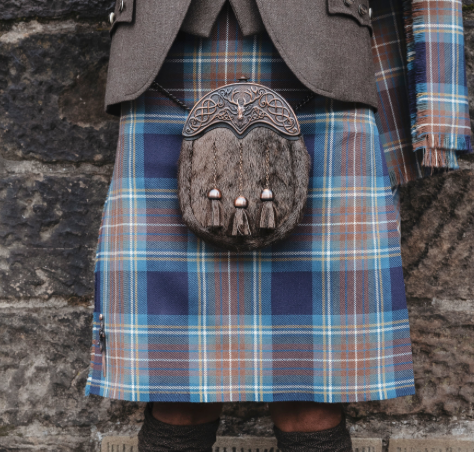The History of Scottish Clans

In Scotland, we have a broad history of Clans dating back to the 12th century. While they have less significance in today’s modern times, the history of Scottish Clans gives us a deep insight into Scottish society today. Have you ever wondered what history your Scottish sounding surname is linked to? Keep reading to uncover what a clan is, what history surrounds Scottish Clans and the legacy linked to them.
What is a Clan?
Clan in Gaelic translates to ‘children’, and a clan was defined by a group of people with the same surname. However, clans were often extended to surrounding neighbours and networks within surrounding areas.
Clan names were usually derived from the area that the family lived within Scotland, which is why surnames like Kerr, Hamilton and Fraser are popular. Scottish Clans have been recorded as far back as the 12th century, a concept created in a society that lived off the land and lived within family communities.
Clans were led by a clan chief, who would direct the clans on matters of politics, disputes, labour and marriages. Today, clans are less recognised as having official standing in Scottish society, however, a clan with a clan leader is still a legally recognised group.
Here is a useful clan map that highlights where clans resided over Scotland (Credits - Wikipedia)

The History of Scottish Clans
As clans based their quality of life on the fertility of the land they lived off, wars and marriage alliances to expand are common when looking at Scottish clan history. Feuds could last between clans for hundreds of years and were famous for a violent outcome.
The last major clan battle and one of the bloodiest took place in Caithness in 1680. This battle was fought between the Campbell’s and Sinclair’s and resulted in over 300 deaths. This battle resulted in the bagpipe tune ‘The Campbell’s are Coming”, and it’s still a touchy subject in Caithness.
But what happened to the clan system that was once so prevalent in Scotland? The answer lies in the 18th century, during the Jacobite uprisings. In 1745, the Jacobites believed Charles Stewart, known as Bonnie Prince Charlie, was the rightful heir to the British throne. This resulted in a massive backlash in Scotland, with Scottish culture massively punished and criminalised as a result to squash the uprisings. Much of Highland Scottish land was taken over by the English, and wearing a kilt, speaking Gaelic and practising Scottish Culture was made illegal. Although there was resistance against this, the Act to prevent the expression of Scottish culture was in place for 36 years. This successfully saw a wipeout of the clan system.

The Legacy that Runs On
Today, Scottish clan history and tartans are making a come back in popularity worldwide.
The resistance towards wiping out Scottish Culture was successful in the sense that during the taking over of Scottish land, Scotsmen and women settled across the globe in places like Canada. Once there, clan culture was somewhat continued, which is why Highland Games and Gaelic speakers still exist worldwide. Scottish surnames like McDonald are common not only in Scotland but also in America and Canada.
Fast-forward to today, the media drives resurgence in interest towards Scottish Clan history and culture. TV and films like Braveheart, Outlander and Brave have encouraged the people of Scotland and fans worldwide to pick up interest. People online are even tracing their family history, and using the internet to connect with others that’s ancestors may have lived within the same clan. People are finding connections to their clan’s tartan and crests, and Scottish retailers often offer clan tartan scarves and kilts. To view our clan merchandise on our website, click here!
If you want to trace your Scottish families history, we’d recommend using this website. Good luck!
https://www.scotclans.com/tracing-your-scottish-ancestry/

 Check out our Yopto Reviews
Check out our Yopto Reviews